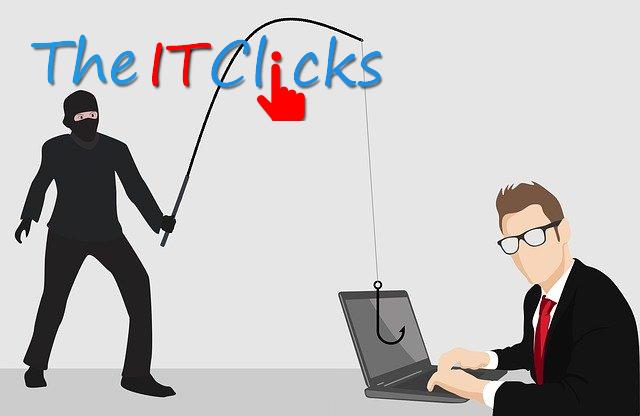20 ways to prevent identity theft

Identity theft is on the rise. In return for the United States Commission (FTC), cybercriminals have not done so from a pandemic, but have redoubled their identity theft efforts. The FTC Consumer Vigilance Network Data Book 2020 reports triple identity theft between 2018 and 2020. In addition, there is no sign of a cybercriminal decline by 2021. Therefore, if you take care not to protect your identity, you are vulnerable.
Table of Contents
Tips To Prevent Identity Theft
Identity theft can occur anywhere, anytime. From your nonsense investigation to your secret documents related to urban devices within you, cybercriminals will no longer be able to steal and abuse your information. By next these tips to help prevent individuality theft, you can obscure your vulnerability.
1. Remove Personal Information From The Internet
When exploring the site, collect as much personal information as possible about yourself and place it in as much shape as possible. There are similar online forums for anyone who wants to learn more about you, including cybercriminal. Everyone knows who you are, where you work, how you can communicate with you, where you live, and much more. To protect privacy and to prevent identity theft, we recommend that you log in on these sites as soon as possible. You can do this automatically by using our free manual opt-in, or you can use OneRep to instantly remove 100+ pages.
2. Obtain Identity Protection PIN (IP) From IRS
SSNs are cybercriminal jeweler – these personal numbers can be vital to unlock your private accounts and even allow criminals to collect your income. If you suspect your SSN is suspicious, you will return your IP PIN. Your tax return will be secure with a separate number, which only you and the IRS will recognize.
3. Create Solid And Random Passwords
Hardy cybercriminal programs use passwords to crash. They often start to interact with your password, and sometimes you need to remove suspicious passwords from your password, even from previous breaches in information. The only thing on your way is a long and complicated ticket that is completely random. But the key is to protect your identity on the Internet.
4. Use Two-Factor Authentication
Two-factor authentication (2FA) saves your accounts when you have unsupported passwords. When you allow 2FA, you need to start all new attempts with a single code to which you can access. After all, a data breach can cancel your password.
5. Save Your Mail
Online privacy may be a new term for identity theft, but many thieves use other best practices, such as BT to steal your e-mail or trash. All you need is a document confidentiality that you have forgotten to shred so that you can get your mail in due time and cut up all your personal records.
6. Use Security Monitoring Tools
You can’t be everywhere at the same time. But there are many brands of identity theft protection services that will keep you under perpetual custody and raise you suspicions, so that you can prevent things from going out of hand.
7. Get Away From Social Media Privacy
Cybercriminals can get a lot of information from a public account, and many brokers delete those accounts in order to complete their profile on you. If, therefore, you are speculative, you are defending against individual theft, there is great caution.
8. Never Share Too Much
Even if social media accounts are isolated, there is enough “email-friendly” access for the scammer to access your personal information. Act therefore safely; We never provide excessively personal information like Home BI, where about the specified time, or photos of your bus registration code or number.
9 Pay Attention To Social Engineering
One of the most quiet ways for cybercriminals to access your information is through social media. For example, you can pretend to be a family member, colleague or family member. To defend your online identity, we will never provide your personal information via SMS, chat or email.
10. Check Your Credit Report
Every year, all three credit messengers (Equifax, TransUnion, and Experian) provide you access to your credit. When checked, make sure that there are no bare grounds for suspicion of fraud and that existing accounts are restricted. Prevention is the best protection against identity theft.
11. Watch Out For Public Wi-Fi Networks
Web pages you’ll never visit through the public Wi-Fi network – you can hide cyber criminals on the Internet and see what you can do to get your files. If you’re not using a VPN, don’t log in online or key in in shops, airports, or other public Wi-Fi sites.
12. Set Notifications Essential
Set alerts to delay sensitive actions and suspicious behavior in real-time. Most financial institutions have options to receive notifications when a transaction occurred or new login attempts are detected. Always turn this on.
13. Don’t Forget Paper
It is time to go with confidential paper documents like utility bills or banks and declarations for brokerages. Log in to your accounts, add your email address and turn off your email. This prevents thieves from intercepting documents.
14. Review Your Financial Statements
Make your business newsletters accessible when newsletters are made. Swift is taking every action to calm down the suspect’s goal or to investigate identity theft earlier in the day.
15. Never Click On A Weird Link
If you have a visitor’s text, an e-mail, or a message that contains a link, never check it out. Even if it looks like a reputable company, the link can lead to malware or fake sites that used to steal your credentials. See also: Phishing email address – what kind of email hook do you know, and how do you protect yourself?
16. Check Skimming Card
Some criminals “scan” information on paper through small devices in gas pumps, ATMs or other untreated stations. Save yourself a salary with less chips under the belt.
17. Consider A Digital Wallet
If you have a physical paper with you, there is a risk of identity theft, if it has been dropped or stolen. But take a look at the digital wallet that stores your items on your phone and in encrypted packages. Make 2FA so powerful. Alternatively, a digital wallet could be the tax key to keep your money.
18. Your SSN Is In A Safe Place
Your SSN registry, open credit line, and even sensitive systems can access phone calls. When your SSN is requested, find out why it is needed and whether another form of identification can be used instead. See also: How do I know if somebody uses a social security number and how to refrain from abuse?
19. Protect Your Phone
If someone gets on the phone, it can do a lot of damage. For example, many people automatically open their bank, brokerages, and social accounts. If your phone doesn’t have a security device, an identity thief easily steals your money. Do it, especially with the fingerprint option.
20. Blocking Your Credit
Taking your credit may seem like an exciting measure, but it can deter identity thieves from disclosing credit lines or other financial crimes. If you do this, make sure your credit meets in all three major credit bureaus. And remember, this is the most effective measure if you want to protect your identity after the social security number (SSN) is displayed.
Packaging.
Cyber crimes can be more specific, but knowing how to protect and protect your privacy allows you to be less concerned and enjoy your service to the fullest online and offline.
Also Read: Technological Change For Organizations









